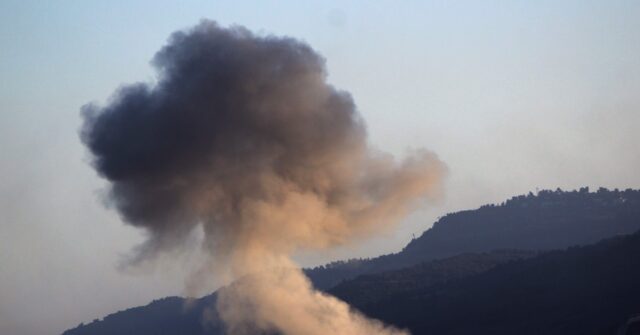In the aftermath of the recent conflict in southern Lebanon, villages that had fallen under the control of Hezbollah were significantly impacted, with extensive destruction reported. Following a ceasefire last month, reports from the field indicated that Israel’s military operations effectively targeted Hezbollah’s military infrastructure. Israeli Army Radio correspondent Doron Kadosh explored the consequences of these military actions, noting that the Israel Defense Forces (IDF) had systematically destroyed virtually every building associated with Hezbollah activities in villages like Kfarkela. This strategy aimed to dismantle both the presence of operatives and the stockpiles of weapons that posed a threat to Israeli communities across the border.
As Israel’s northern communities began to recover from the prolonged shelling experienced over the previous year, the situation in southern Lebanon presented a stark contrast. Areas that had been utilized as military strongholds by Hezbollah were left in ruins, with observers predicting it would take years for reconstruction efforts to yield any semblance of normalcy. The devastation observed in these Hezbollah-aligned villages painted a bleak picture, leading analysts to draw parallels with the humanitarian crises observed in Gaza. This contrasting recovery highlighted the broader implications of Hezbollah’s militarization of these areas, as well as the challenges faced by the Lebanese population as they navigated the aftermath of conflict.
Brigadier General Shai Klepper, commander of the 91st Division, emphasized the IDF’s approach in dealing with villages identified as military outposts for Hezbollah. His statements reflected a clear strategy: to eliminate both the military operatives and the physical infrastructure associated with them. The IDF’s focus was on ensuring that any building that functioned as a safe haven for Hezbollah fighters or housed weapons caches was destroyed, a tactic designed to undermine Hezbollah’s operational capabilities in the region. These military actions were a calculated response to the ongoing threat posed by Hezbollah to Israeli security.
The scale of destruction was such that it sparked concerns over the humanitarian and living conditions within the affected villages. Observers commented on the dire state of these communities, suggesting they resembled conditions in Gaza, where recurrent conflicts have left areas devastated and populations displaced. The comparisons underscored the human cost of the conflict and raised questions about the long-term implications for Lebanese civilians who are now caught in the aftermath of military engagements they did not instigate. Consequently, the daily realities for residents—previously living under Hezbollah’s control—were transformed into a struggle for survival amidst the remnants of war.
The broader geopolitical ramifications of the conflict were not lost on analysts and observers. The ongoing struggle between Israel and Hezbollah was indicative not only of regional tensions but also reflected a significant humanitarian crisis that could unfold as a result of the destruction. Villagers faced immediate challenges regarding shelter, access to basic services, and economic stability, which were further compounded by the lingering threat of violence. The lengthy process of reconstruction and the social dynamics reshaped by such conflicts would likely influence not just local interactions but also the broader Lebanese societal landscape in the years to come.
In conclusion, the aftermath of the conflict displayed a striking dichotomy between recovery in northern Israel and the devastation across the border in southern Lebanon. The systematic destruction executed by the IDF left a profound impact on Hezbollah’s military capabilities, yet it also engendered a humanitarian crisis for innocent civilians. This situation raised important questions regarding future stability, reconstruction efforts, and the potential for renewed tensions as the region continued to grapple with the legacy of conflict. As scholarly sources, analysts, and journalists delve into the outcomes of this war, the implications for both Israeli and Lebanese communities remain a central theme in understanding the ongoing strife in this volatile region.

